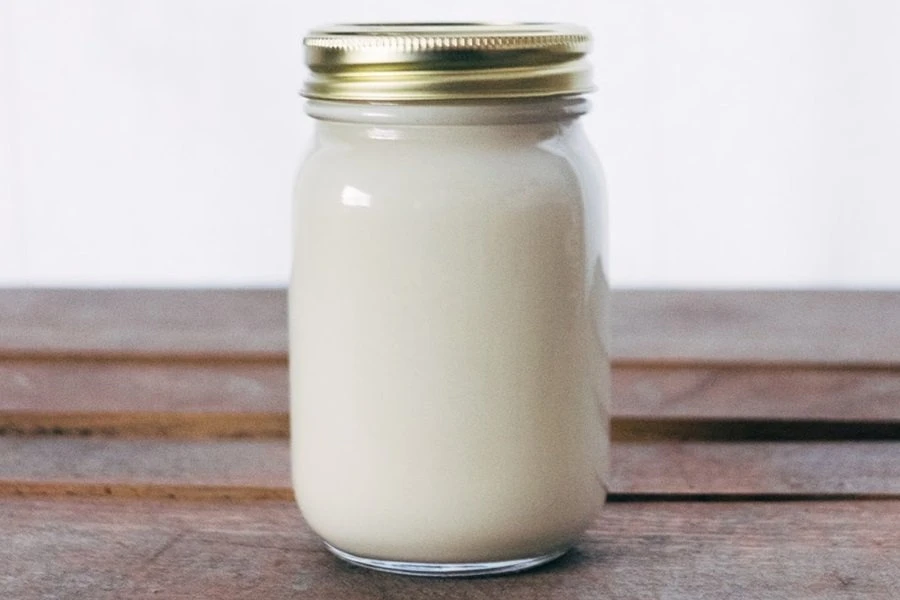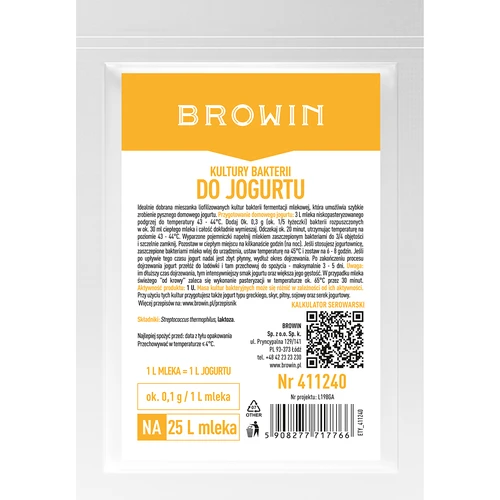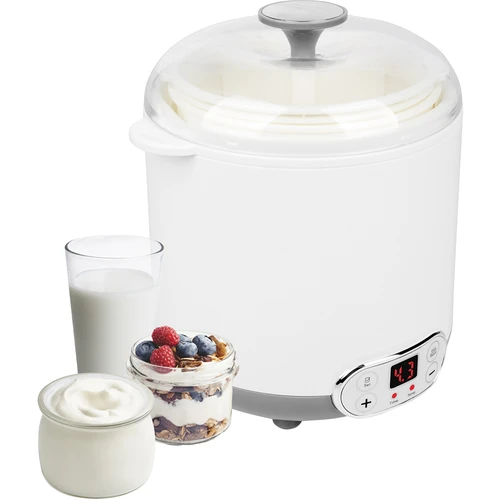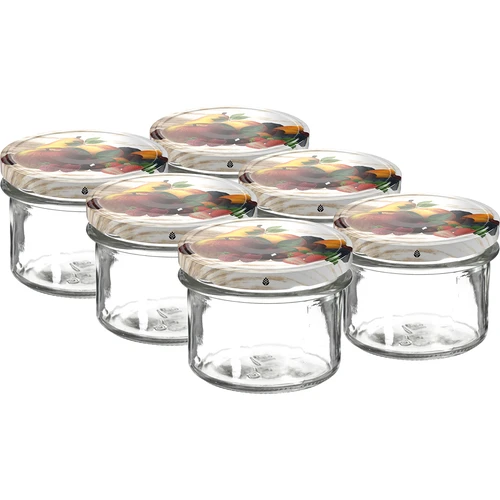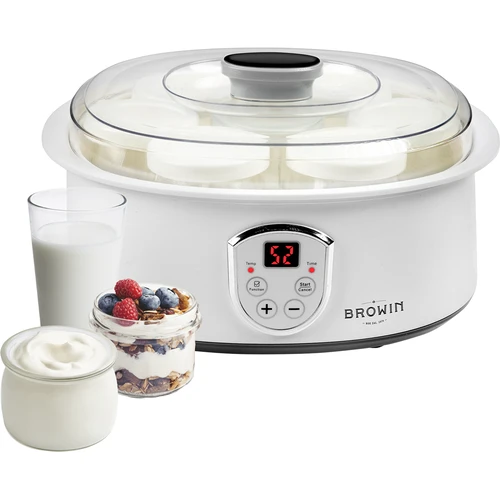Preparing homemade natural yoghurt is not as difficult as it seems. Try making it on your own at home. We are certain that everyone will enjoy the one made according to our recipe. Natural yoghurt is an excellent source of calcium and vitamins required for correct functioning of muscles, immune system and nervous system. When made using the home method, it does not contain any sugar or artificial additives. It is worth considering including it in your everyday diet.
Preparation:
Heat the milk up to the temperature of 43-44°C. In a small amount of milk of that temperature, dissolve the bacterial cultures and wait 20 minutes for the bacteria to become active. Then add it to the rest of milk. Maintain the temperature of milk at the level of 43-44°C. Mix everything gently. Fill clean, scalded jars up to 1/3 of their volume and close them tightly. Leave the container with inoculated milk at a warm place, e.g. next to the radiator, for about a dozen hours (best for the night). Afterwards, move the yoghurt to the refrigerator and keep it there for consumption (within up to 3-5 days).
How to use the yoghurt maker:
If you are using a yoghurt maker, put the container inside, set the temperature of 45°C on the device and leave it to mature for 6-8 hours (if the yoghurt is still liquid, extend the time of maturing). Afterwards, turn off the device.
Note:
- the optimal range of milk Ph value for the bacterial cultures to work properly is from 6 to 7
- the longer the maturation time, the more intense the flavour of yoghurt
- any extras – e.g. nuts, fruit, jam, muesli, etc. – should be added to the finished yoghurt right before consumption
- if you are using unpasteurised milk, bring it to boil first, then cool it down to 43-44°C, and then proceed according to the instructions






 Cheese calculator
Cheese calculator



 Winemaking
Winemaking





